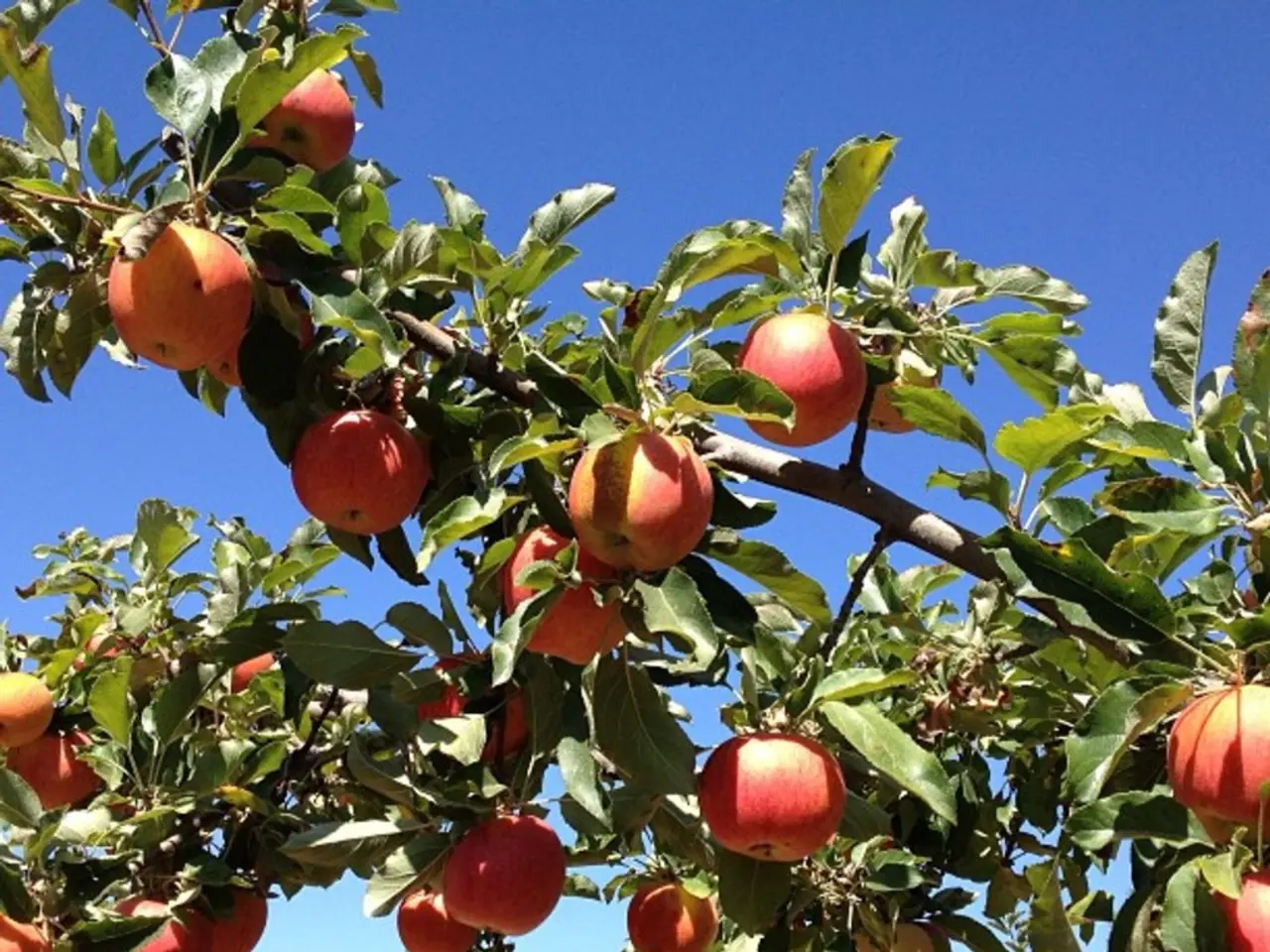Guidelines for autumn apple tree planting ensuring a fruitful yield in years to come
In the spirit of nurturing a flourishing garden, here's a guide to planting an apple tree. Follow these steps, and you'll be on your way to enjoying homegrown apples in no time.
- Preparing the Planting Hole
Start by digging a hole approximately 60-70 cm wide and deep. This will provide ample space for the roots to grow and settle comfortably. Line the bottom of the hole with a fertile mixture of topsoil, compost, and wood ash to create a nurturing foundation for your sapling.
- Choosing the Right Location
Apple trees thrive in sunny areas with good ventilation, avoiding cold air pockets. They also prefer high humidity. So, find a spot that ticks all these boxes and provides your apple tree with the best chance of success.
- Planting the Sapling
When planting, ensure the root neck of the sapling is level with or slightly above the ground. Spread out the roots and fill the hole with soil, periodically compacting it to avoid air pockets. This will help the tree establish a strong root system.
- Mulching and Watering
After planting, water the tree generously to allow the soil to settle around the roots. Then, apply a 5-7 cm layer of mulch (compost, peat, sawdust) to retain moisture and protect the roots from frost. During dry autumn days, repeat watering until the ground freezes. This will help prevent the roots from drying out.
- Fertilising and Maintenance
A month before the cold sets in, apply organic and mineral fertilizers with potassium and phosphorus to boost the apple tree's immunity. Regularly clear the base of weeds around the apple tree to give it room to grow.
- Protection and Care
Don't forget to protect the sapling from rodents and mechanical damage. Good drainage is key to healthy roots, so avoid planting in low-lying areas where water collects.
- Autumn Bordeaux Mixture Application
The recommended application of Bordeaux mixture in the garden during autumn should focus on coating the plants and soil surfaces thoroughly. This helps the plants survive winter. It's important to apply it repeatedly, as rain can wash it off, and targeting infections on the leaves and stems optimizes protection through winter. However, care must be taken due to its copper content, which can harm beneficial soil fungi and soil health if overused.
By following these steps, you'll be well on your way to growing a healthy, thriving apple tree in your garden. Happy gardening!




